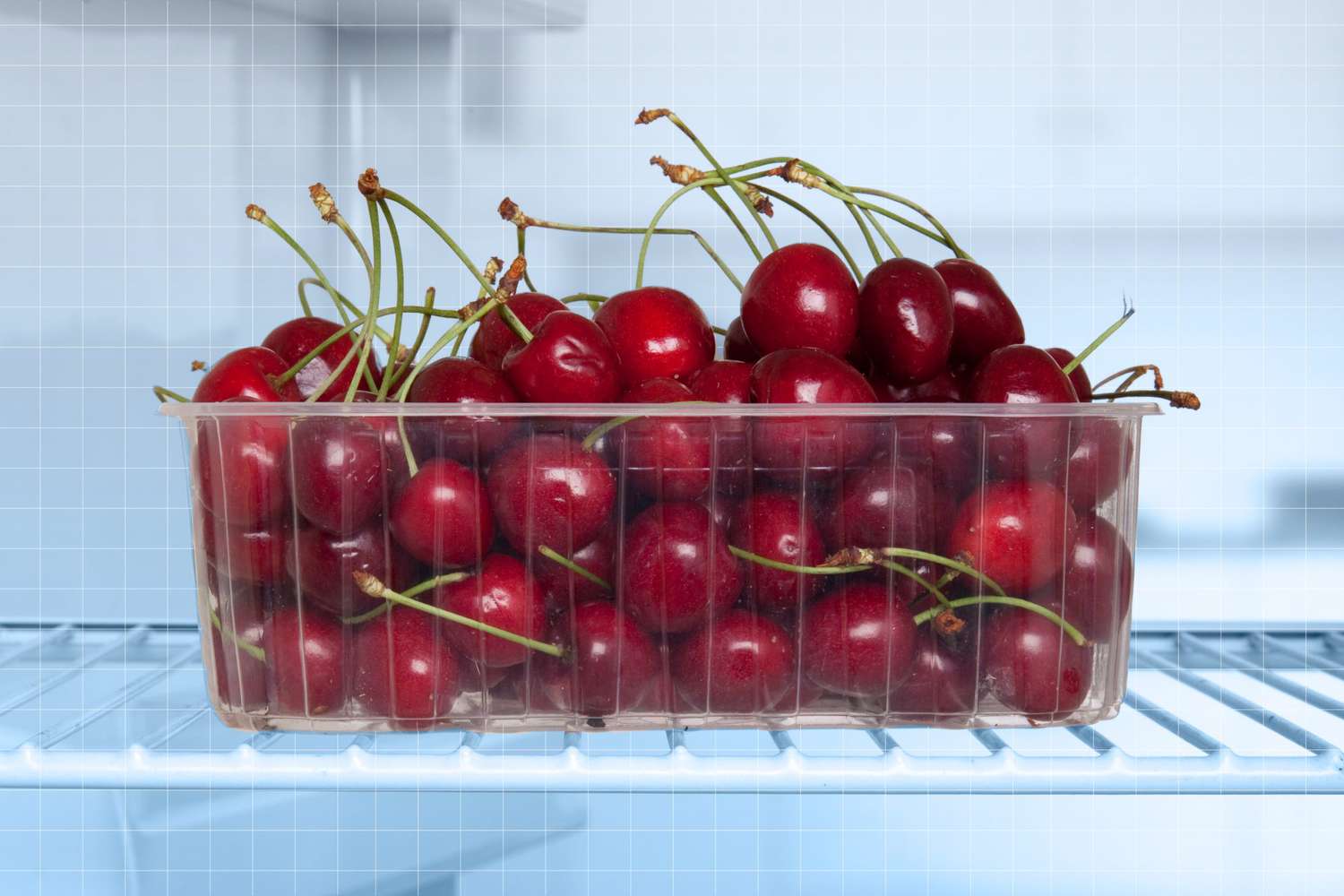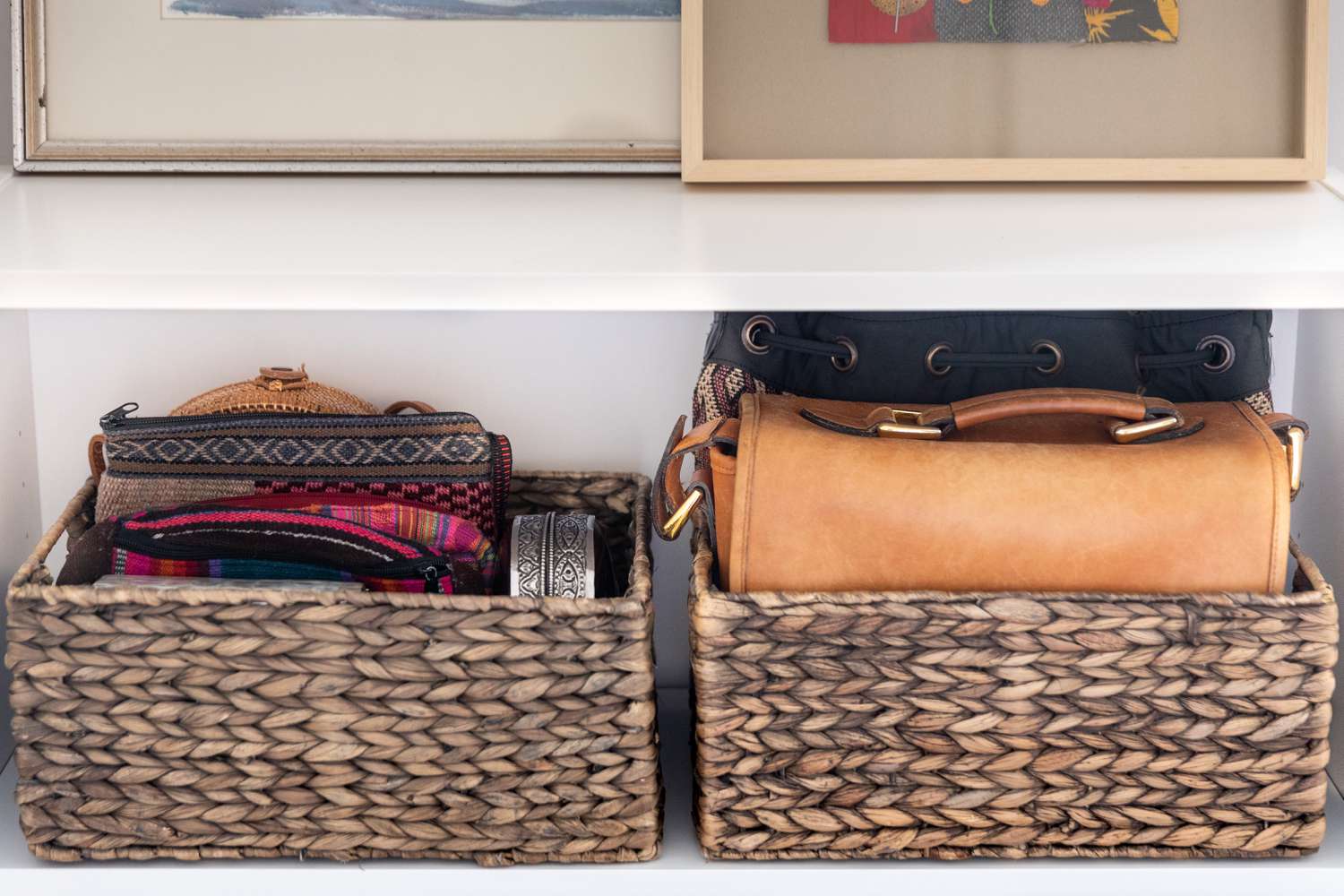

Articles
How To Store Salami
Modified: December 7, 2023
Discover expert tips and tricks for storing salami in this informative articles. Keep your salami fresh and flavorful with proper storage techniques.
(Many of the links in this article redirect to a specific reviewed product. Your purchase of these products through affiliate links helps to generate commission for Storables.com, at no extra cost. Learn more)
Introduction
Salami is a beloved and flavorful cured meat that can be enjoyed in a variety of ways. Whether it’s added to a charcuterie board, sliced thin in a sandwich, or incorporated into a pasta dish, salami brings a rich and savory taste to any culinary creation. However, to fully enjoy the distinctive flavors and ensure its freshness, proper storage is essential. In this article, we will explore the best practices for storing salami to maintain its quality and taste.
When it comes to storing salami, there are a few key factors to consider. From selecting the right salami to packaging it properly and choosing the ideal storage location, each step plays a crucial role in preserving the meat’s flavor and texture.
In the following sections, we will delve into these considerations in more detail and provide helpful tips to maximize the shelf life of your salami. Additionally, we will discuss how to check for spoilage and ensure that your salami remains safe to consume. Let’s dive in!
Key Takeaways:
- Choose high-quality, fresh salami and package it in butcher paper and plastic wrap to preserve its flavor and texture. Store in a cool, dry place away from direct sunlight and strong odors for optimal freshness.
- Regularly inspect stored salami for spoilage, including mold growth, unusual texture or color, and off-putting smell. Trust your senses and discard any questionable salami to ensure safety.
Read more: How To Make Salami Roses Using A Glass
Choosing the Right Salami
When selecting salami for storage, it’s important to choose a high-quality product that will withstand the storage process without losing its flavor or texture. Here are a few factors to consider:
- Type of Salami: There are various types of salami available, each with its own distinct taste and texture. Whether you prefer the spicy kick of pepperoni or the aromatic flavors of Genoa salami, make sure to choose a type that suits your preference.
- Freshness: Ensure that the salami you purchase is fresh and recently cured. Avoid salami with any signs of discoloration, mold growth, or unpleasant odor.
- Ingredients and Quality: Read the label and opt for salami made from high-quality ingredients. Look for options that are free from artificial preservatives and additives.
- Brand Reputation: Consider purchasing salami from reputable brands known for their expertise in producing high-quality cured meats.
- Slicing Thickness: If possible, choose whole salami logs rather than pre-sliced ones. This way, you can control the thickness of the slices and minimize exposure to air, helping to retain freshness.
By considering these factors, you can ensure that you are starting with the best quality salami, setting the stage for proper storage and preservation.
Properly Packaging Salami
Once you have chosen the perfect salami, it’s crucial to package it correctly to maintain its freshness and prevent it from drying out. Follow these guidelines to properly package salami:
- Wrap in Butcher Paper: Start by wrapping the salami tightly in butcher paper. This type of paper allows the meat to breathe while providing a protective barrier against moisture and odors.
- Use Plastic Wrap: After wrapping it in butcher paper, take an extra step to preserve the salami by wrapping it in plastic wrap. This further seals in moisture and prevents the meat from coming into contact with air.
- Avoid Aluminum Foil: While aluminum foil may seem like a viable option, it can actually trap moisture and lead to mold growth. It’s best to stick to butcher paper and plastic wrap for optimal preservation.
- Label and Date: To keep track of the salami’s age, label the package with the type of salami and the date of storage. This will help you prioritize which ones to consume first and ensure you are enjoying the freshest salami.
- Store in a Ziplock Bag: Place the wrapped salami in a resealable plastic bag or airtight container to provide an extra layer of protection against moisture and odors.
By using these packaging techniques, you can effectively extend the shelf life of your salami and maintain its quality until you are ready to enjoy it.
Selecting the Ideal Storage Location
The storage location plays a vital role in maintaining the quality and taste of your salami. Follow these guidelines to select the ideal storage location:
- Temperature: Salami should be stored in a cool environment with a temperature between 50°F and 68°F (10°C and 20°C). Avoid storing salami in areas that are too warm, as this can lead to the growth of harmful bacteria or spoilage.
- Humidity: The storage area should have moderate humidity, ideally between 60-70%. Excessive humidity can cause mold growth, while low humidity can result in the drying out of the salami.
- Avoid Direct Sunlight: Keep salami away from direct sunlight or any sources of heat. Sunlight can accelerate the spoiling process and cause the salami to become rancid.
- Avoid Strong Odors: Salami has a porous surface and can easily absorb strong odors. Keep it away from pungent foods, cleaning supplies, or any other strong-smelling substances.
- Avoid Refrigeration: Unlike some other cured meats, salami is best stored at room temperature and should not be refrigerated. The cold temperature and dry environment of the refrigerator can cause the salami to lose its flavor and become excessively dry.
By considering these factors, you can ensure that your salami remains in optimal condition, preserving its taste and texture for an extended period.
Store salami in the refrigerator, wrapped in wax paper or butcher paper to allow it to breathe. Alternatively, it can be stored in a cool, dry place for up to 6 weeks. Avoid plastic wrap, as it can cause the salami to sweat.
Duration of Salami Storage
The duration for which salami can be stored depends on various factors, including the type of salami and how it has been cured. On average, most salami can be stored for about 2-3 months. However, some types of artisanal or dry-cured salami can last up to 6 months or even longer if stored optimally.
It’s important to note that the quality and taste of salami may change over time. As salami ages, it develops a more intense flavor and dries out gradually. This is a natural process and can be enjoyable for those who appreciate a more pronounced taste. However, if the salami becomes excessively dry, loses its flavor, or shows signs of spoilage, it’s best to discard it.
It’s worth mentioning that the duration of salami storage can also be influenced by the packaging and storage conditions. Proper packaging in butcher paper and plastic wrap, along with storing in a cool and moderate humidity environment, can help extend the lifespan of salami.
When in doubt about the quality or safety of your stored salami, trust your senses. If it looks discolored, feels slimy, has a foul smell, or develops mold growth, it’s a clear indication of spoilage, and the salami should not be consumed.
To ensure you always have fresh salami on hand, consider rotating your stock and consuming the oldest salami first. This will help you enjoy the best quality and flavor while minimizing waste.
By understanding the average storage duration and monitoring the salami’s quality, you can savor the deliciousness of salami while it’s at its best.
Read more: How To Make A Salami Rose Without A Glass
Tips for Maintaining Salami Quality
To ensure that your salami maintains its quality and flavor throughout its storage period, here are some essential tips to follow:
- Handle with Clean Hands: Always handle salami with clean hands to prevent the transfer of bacteria or contaminants onto the meat.
- Avoid Cutting in Advance: Slice salami as needed rather than cutting it all at once. This helps to minimize exposure to air and keep the remaining salami fresh.
- Store in Small Portions: If you have a large salami, consider cutting it into smaller portions before storing. This allows you to consume one portion at a time, preventing unnecessary exposure of the entire salami to air.
- Regularly Check the Package: Periodically inspect the packaging for any signs of moisture, mold, or spoilage. If you notice any issues, discard the salami immediately.
- Avoid Freezing: Freezing salami can alter its texture and affect its flavor. It is best to store salami at room temperature rather than freezing it.
- Use a Cheese Dome: If you have a cheese dome or a similar container with a breathable lid, it can be an ideal option to store salami. This will provide a controlled environment while still allowing air circulation.
- Keep Away from Strong Smells: Salami easily absorbs odors, so store it away from strong-smelling foods like onions, garlic, or potent cheeses.
- Wrap Unused Portions: If you have leftover salami, wrap it tightly in fresh butcher paper and plastic wrap to maintain its freshness before returning it to storage.
- Consider Vacuum Sealing: For longer-term storage, vacuum sealing can help preserve the flavor and quality of salami by removing excess air and preventing oxidation.
By following these tips, you can extend the shelf life of your salami and enjoy it at its best quality throughout its storage.
Checking Salami for Spoilage
It’s important to regularly check your stored salami for any signs of spoilage to ensure its safety and quality. Here are some key indicators of spoilt salami:
- Visual Inspection: Look for any visible signs of mold growth on the salami’s surface. While some dry or white molds can be brushed off, the presence of fuzzy or colorful molds indicates that the salami is no longer safe to consume.
- Texture and Color: Examine the salami’s texture and color. If it appears slimy or sticky, has an unusual green or grey color, or shows any signs of discoloration, it is likely spoiled.
- Smell: Give the salami a sniff test. If it has a foul, rancid odor or smells significantly different from its usual aroma, it indicates spoilage.
- Taste Test: If you’re unsure about the quality of the salami, you can perform a small taste test. Spoiled salami will have an off-flavor, sour taste, or an unpleasant, ammonia-like taste.
Remember, if any of these signs are present, it is best to err on the side of caution and discard the salami to avoid any potential foodborne illnesses.
It’s worth noting that salami develops a coating of natural white mold during the aging process, which is a desirable characteristic and safe to consume. However, if you notice any mold growth that appears different or excessive, it’s an indication of spoilage.
Ensure that you regularly inspect the salami packaging and follow your senses to determine its freshness. When in doubt, it’s always better to discard the salami than risk your health.
By being vigilant and promptly identifying any signs of spoilage, you can maintain the quality and safety of your salami stash.
Conclusion
Properly storing salami is essential for preserving its flavor, texture, and safety. By following the guidelines outlined in this article, you can maximize the shelf life of your salami and enjoy it at its best quality.
Start by choosing high-quality salami that suits your preference, ensuring it is fresh and made from top-notch ingredients. Properly packaging the salami in butcher paper and plastic wrap will protect it from drying out and prevent exposure to air.
Selecting the ideal storage location is crucial, maintaining a cool and moderate humidity environment, away from direct sunlight and strong odors. Remember, salami should be stored at room temperature and not refrigerated.
Keep track of the duration of salami storage, remembering that it can range from a few months to even longer, depending on the type and curing process. Regularly checking the salami for signs of spoilage such as mold growth, odd texture or color, and off-putting smell is important to ensure its safety.
Lastly, adhere to proper handling practices, such as using clean hands, avoiding cutting in advance, and storing in small portions to minimize air exposure.
By following these tips and staying attentive to the quality of your salami, you can enjoy this delectable cured meat for an extended period, savoring its rich flavors in various culinary creations.
So, go ahead and indulge in the world of salami, knowing that with the right storage techniques, it will remain a delicious treat for your taste buds.
Frequently Asked Questions about How To Store Salami
Was this page helpful?
At Storables.com, we guarantee accurate and reliable information. Our content, validated by Expert Board Contributors, is crafted following stringent Editorial Policies. We're committed to providing you with well-researched, expert-backed insights for all your informational needs.















0 thoughts on “How To Store Salami”